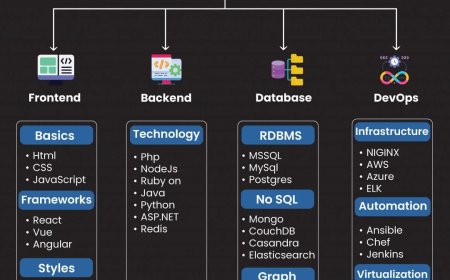What Common Vulnerabilities Do Smart Contract Security Audits Catch?

Smart contracts are at the heart of modern blockchain ecosystems, powering everything from decentralized finance (DeFi) platforms to NFT marketplaces and DAOs. These self-executing programs handle high-value transactions and critical business logic without intermediaries. However, the very nature of their automation and immutability makes them prime targets for exploitation. Once deployed, smart contracts are extremely difficult to modify, and a single vulnerability can result in irrecoverable losses worth millions. This is where smart contract security audits come in.
A professional smart contract audit helps developers identify and mitigate vulnerabilities before deployment, safeguarding users and project reputation. In this blog, well explore the most common types of vulnerabilities that these audits typically catch, shedding light on how essential they are in the blockchain development lifecycle.
1. Reentrancy Attacks: The Most Infamous Vulnerability
Reentrancy is one of the most well-known and exploited vulnerabilities in smart contract history. It occurs when a malicious contract repeatedly calls a function in the vulnerable contract before the initial function call is completed, thereby manipulating the contract's state.
The infamous DAO hack in 2016, which resulted in a loss of around $60 million worth of ETH, was due to a reentrancy vulnerability. Auditors pay close attention to external calls within functions, especially if they precede state changes. They often recommend using checks-effects-interactions patterns or Soliditys reentrancyGuard to mitigate this risk.
2. Integer Overflows and Underflows: Arithmetic Gone Wrong
Before Solidity version 0.8.0, arithmetic operations in smart contracts did not automatically check for overflows and underflows. This meant that subtracting a larger number from a smaller one could result in an extremely large integer, leading to unexpected behavior.
Smart contract audits catch such flaws by checking how arithmetic operations are implemented. Today, most projects use Soliditys built-in safe math functions or import SafeMath libraries to eliminate this vulnerability. However, older contracts or those written in different languages still need careful analysis.
3. Access Control Issues: Improper Permissions and Privileges
Many hacks stem from poor access control implementation. If sensitive functions are not properly restricted, unauthorized users may gain access to administrative functions like minting tokens, pausing contracts, or altering key variables.
Auditors evaluate access modifiers such as onlyOwner, require(msg.sender == owner), and role-based permissions. They also check for hardcoded addresses, unclear ownership structures, and improperly initialized contracts. A missed access control check can lead to complete contract takeover.
4. Unchecked External Calls: Trusting the Unknown
Smart contracts often interact with external contracts or addresses, but these external calls are a major attack vector. If not properly validated, external calls can fail silently, get hijacked, or trigger malicious fallback functions.
Security audits inspect how a contract handles calls to external entities. Best practices like checking call return values, using transfer or send cautiously, and limiting external interactions help reduce the surface area for attacks. Auditors also flag contracts that rely too heavily on external oracles or interfaces.
5. Front-Running Vulnerabilities: Timing Attacks in the Mempool
Front-running is a form of attack where a malicious user monitors pending transactions in the mempool and submits their own transaction with a higher gas fee to jump ahead. In DeFi and token sales, this can lead to major financial loss or price manipulation.
Smart contract audits identify functions vulnerable to front-runningespecially those involving token swaps, auctions, or price changes. Countermeasures like commit-reveal schemes, transaction ordering limits, or time locks are commonly recommended to secure such contracts.
6. Denial of Service (DoS) Attacks: Disrupting Contract Functionality
DoS attacks on smart contracts aim to make certain functions unusable or to lock users out of critical operations. These can be intentional, such as blocking access to a contract function, or unintentional, like writing a loop that exceeds the gas limit.
Common examples include:
-
Unbounded loops that consume too much gas
-
Malicious contract addresses that always revert when called
-
Over-reliance on a single address or oracle
Auditors analyze contract logic for functions that might be susceptible to gas limits or fail under specific edge cases.
7. Timestamp Dependency: Manipulating Time-Based Logic
Some smart contracts depend on block.timestamp to manage time-sensitive operations like auctions, staking periods, or token vesting. However, this can be slightly manipulated by miners, especially in low-difficulty or less active networks.
If time-based logic is not carefully implemented, attackers can gain unfair advantages by manipulating block times. Auditors highlight functions that rely heavily on timestamps and recommend alternate logic where feasible, or at least proper tolerance checks to mitigate manipulation.
8. Logic Flaws in Business Processes
Beyond technical bugs, smart contracts can suffer from flawed business logic. Even if the code is clean, the logic may not align with the intended economic model. For example, a token vesting contract might release all tokens at once due to a logical misstep, or a DeFi lending protocol might miscalculate interest rates.
Security auditors work closely with the development team to understand the intended behavior and ensure the code reflects it. They simulate different user actions and edge cases to test how the contract performs under unusual conditions.
9. Insecure Randomness: Predictable Outcomes
Randomness is hard to achieve on-chain. Contracts that rely on blockhash, block.timestamp, or similar values to generate randomness are vulnerable because these inputs are predictable or manipulatable to some extent.
This becomes critical in use cases like gaming, lotteries, and NFT drops. Auditors flag insecure random number generation methods and usually recommend off-chain solutions like Chainlink VRF (Verifiable Random Function) to ensure fairness and unpredictability.
10. Fallback Function Abuse and Gas Limit Exploits
Smart contracts may include fallback functions to accept ETH or execute certain operations. However, if fallback functions are improperly designed or omitted, it can result in unintended consequences.
Auditors check for:
-
Excessive logic in fallback functions
-
Unexpected ether acceptance
-
Low gas stipend handling
They also test for gas griefing attacks, where a malicious user causes a contract to run out of gas, halting execution. These subtle issues can be difficult to detect without a thorough audit.
11. Token Standard Non-Compliance
Many smart contracts are based on token standards like ERC-20, ERC-721, or ERC-1155. Failing to comply with these standards can cause problems with wallets, exchanges, and dApps that expect certain behaviors.
Auditors review implementation against standard specifications to ensure correct behavior for transfers, approvals, balance checks, and events. They also verify whether transfer hooks and custom logic deviate from standard expectations.
12. Improper Use of Delegation (delegatecall)
The delegatecall opcode in Solidity enables code reuse by allowing a contract to execute another contracts code in its own context. While powerful, it is also dangerous because it allows the callee to modify the callers storage.
Auditors scrutinize contracts that use delegatecall, particularly in proxy patterns or upgradeable contracts. If access control and storage layout arent properly managed, delegatecall can open a backdoor to full control.
Conclusion: Audits Are Critical, But Not Optional
The smart contract vulnerabilities discussed above highlight just how fragile and attack-prone decentralized applications can be. Even the most experienced development teams can overlook critical security flaws. Thats why thorough smart contract security audits are essentialnot just as a checkbox before launch, but as an ongoing process.
Audits catch everything from classic reentrancy attacks to subtle logic flaws and gas exploits. They help projects maintain user trust, avoid catastrophic losses, and stay compliant with industry standards. But its important to work with reputable audit firms that offer not just automated testing but manual reviews, threat modeling, and real-world attack simulations.
In the high-stakes world of blockchain, security is not a luxuryits the foundation.

























